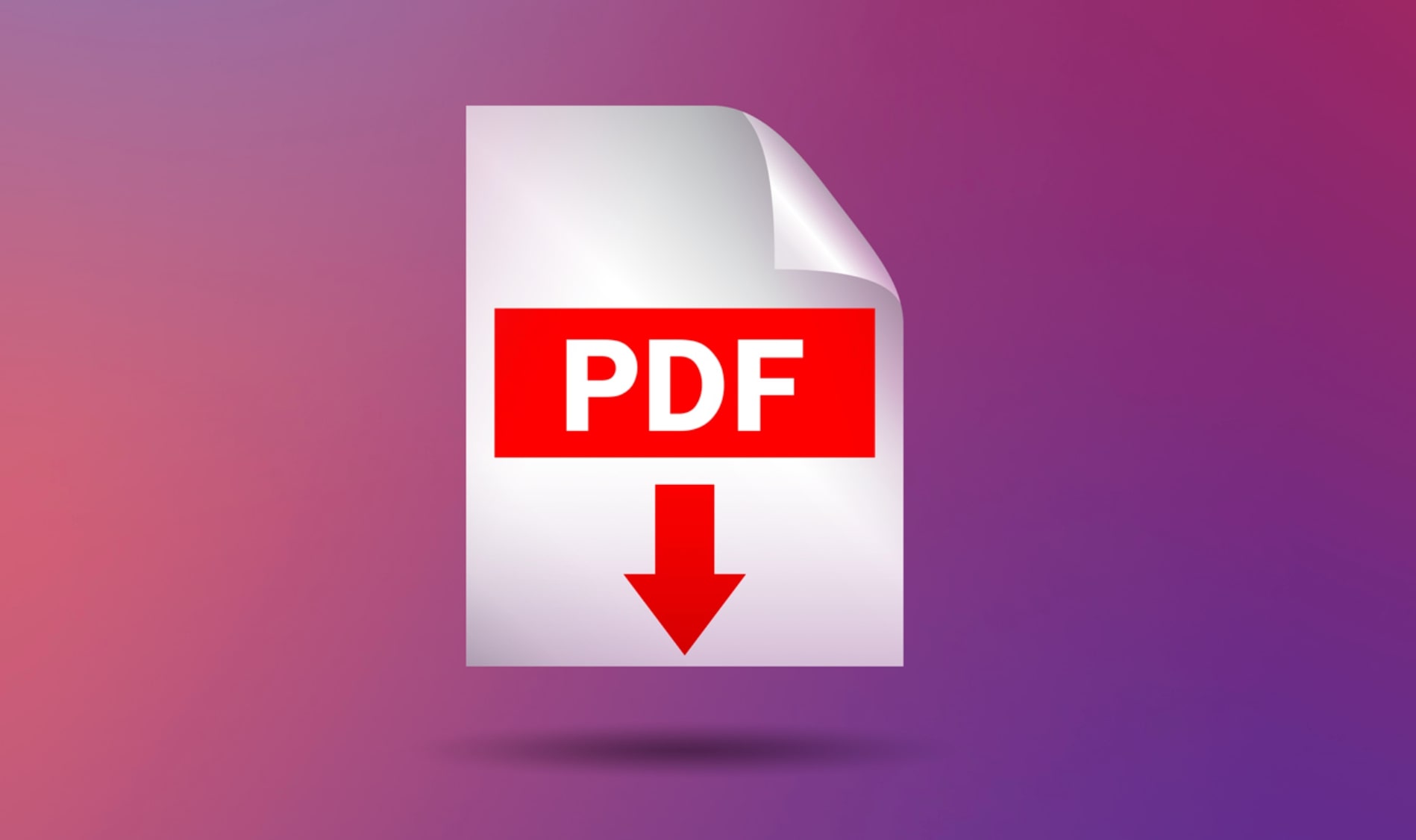Password protection in PDF is a critical security feature that embeds a document within a cryptographic shield, necessitating a specific password for access.
This safeguard ensures exclusive entry to individuals possessing the accurate password, allowing them to view, modify, or print the document based on predefined permissions.
It acts as a robust barrier against unauthorized disclosure, alteration, and misuse of the document’s confidential content.
Employing password protection in PDFs is paramount for preserving the document’s privacy and integrity across numerous sectors, including legal, healthcare, and business environments.
It underscores a proactive approach to data security, reflecting the growing necessity for stringent privacy measures in our digital age.
This strategy not only protects sensitive information from cyber threats but also reinforces trust and reliability in digital communications, making it an indispensable tool in modern document management practices.
10 Best Online Tools and Software to Add Password Security to PDF
1. Adobe Acrobat
- Launch Adobe Acrobat and open the PDF file you wish to protect by choosing “File” > “Open.”
- Navigate to the “Protect” tool by selecting “Tools” > “Protect” > “Encrypt” > “Encrypt with Password.”
- Set the password- Check the box for “Require a password to open the document” and enter your password.
- Set permissions (optional)- You can also restrict printing and editing of the document by setting a permissions password.
- Save your PDF with the new settings.
2. Foxit PhantomPDF
- Open Foxit PhantomPDF, and load your PDF file.
- Go to the “Protect” tab, and select “Password Protect.”
- Configure security settings, including setting the document open password and permissions password as needed.
- Apply and save your document with password protection.
3. Nitro PDF Pro
- Launch Nitro PDF Pro and open your PDF document.
- Access “Protect Document” by navigating to “File” > “Prepare” > “Protect Document.”
- Enter a password for opening the document and set any desired permissions.
- Save the document to apply for the password protection.
4. PDF-XChange Editor
- Open the PDF in PDF-XChange Editor.
- Access “Document Properties” by pressing Ctrl+D or through the “File” menu.
- Select “Password Security” from the “Security” tab.
- Enter your desired passwords and adjust permissions as necessary.
- Save your document with the updated security settings.
5. Sejda PDF Editor (Online)
- Visit Sejda’s website and choose the “Protect PDF” tool.
- Upload your PDF, then wait for it to process.
- Set a password for the document, and specify any permissions.
- Apply changes and download the password-protected PDF.
6. PDFescape
Online Version:
- Navigate to the PDFescape website and upload your PDF.
- Choose “Protect” and set your password.
- Save the document to your computer.
Desktop Version:
- Open PDFescape Desktop, and load your PDF.
- Find the “Encrypt with Password” option under security or protect.
- Set your password and permissions, then save the document.
7. Google Chrome
- Open the PDF in Chrome by dragging it into a new tab.
- Initiate the print dialog with Ctrl+P or Cmd+P.
- Choose “Save as PDF” as the destination.
- Click ‘Save’, then in the save dialog, select “Encrypt PDF document.”
- Enter your password and save the document.
8. Microsoft Word
- Open the document in Word. Convert your PDF to a Word document if necessary.
- Go to File > Info > Protect Document and choose “Encrypt with Password.”
- Enter your password and save your document.
- Export or Save As PDF to re-convert the document to PDF format, retaining password protection.
9. Soda PDF (Desktop & Online)
- Open Soda PDF and load the PDF file you want to protect.
- Select the “Secure & Sign” module, then click on “Password Security.”
- Set the document open password and, if desired, set permissions for printing and editing.
- Save your document with the password applied.
10. Wondershare PDFelement
- Launch PDFelement and open the PDF file.
- Go to the “Protect” tab, and choose “Password.”
- Enter a password for opening the document and adjust permissions as needed.
- Save the document to apply for the password protection.
benefits of Password Protection On Your PDF File
1. Guaranteed Confidentiality
When you password-protect a PDF, you’re essentially putting your information in a digital safe. This is especially critical for documents containing sensitive data such as personal identification details, financial information, or confidential corporate strategies. Password protection acts as a gatekeeper, ensuring that only those with the key (password) can access the treasure trove of information contained within, thus maintaining strict confidentiality. here you may know how to remove Encryption from a Locked PDF File.
2. Assured Data Integrity
Imagine sending out a contract or a proposal, only to have it altered without your consent. Password protecting your PDFs safeguards against such unauthorized modifications, preserving the original content’s integrity. This assurance is vital in maintaining trust in digital communications, where the authenticity of information can significantly impact decisions, reputations, and financial outcomes.
3. Regulatory Compliance
With the digital age comes a plethora of regulations designed to protect personal and sensitive information. From the Health Insurance Portability and Accountability Act (HIPAA) in the healthcare sector to the General Data Protection Regulation (GDPR) for EU residents, password-protecting PDFs helps in adhering to these legal requirements, thereby avoiding potential fines and legal repercussions while also protecting your client’s privacy.
4. Selective Access Control
Password protection is not just about keeping everyone out; it’s about letting the right ones in. By setting a password, you control access, ensuring that only those who need to view or work on the document can do so. This level of control is crucial in environments where information is on a need-to-know basis, allowing for the secure handling of documents across various levels of an organization.
5. Customizable Permission Settings
Not everyone needs the same level of access to your document. Some may need to view it, others to edit, and some just to print. Password protection allows for the customization of these permissions, providing a granular level of control over how your document is interacted with. This flexibility is key in collaborative environments, ensuring efficiency without compromising security.
6. Robust Document Security
In an era where cyber threats loom large, the importance of securing digital documents cannot be overstated. Password-protecting your PDFs adds a robust layer of security, shielding them from unauthorized access and cyber-attacks. This protection is essential for anyone dealing with sensitive information, providing a simple yet effective security measure against potential digital threats.
7. Secure Mobility
The beauty of PDFs lies in their portability, but this advantage also presents a risk if documents fall into the wrong hands. Password protection travels with your PDFs, ensuring they remain secure, whether they’re being accessed from a mobile device in a coffee shop or sent across the globe via email. This secure mobility is crucial for modern businesses, where work often happens on the go.
8. Enhanced Trust and Professionalism
By securing your documents, you’re not just protecting data; you’re also sending a message about your professionalism and the seriousness with which you treat confidentiality. This can significantly boost your reputation, fostering trust among clients, partners, and employees. In a world where trust is a currency, password-protecting your PDFs can be a wise investment in your professional relationships.
9. Prevention of Unauthorized Distribution
Password protection also acts as a deterrent against unauthorized sharing or distribution of documents. When a PDF is secured, it cannot be easily forwarded or copied without your consent, ensuring that sensitive information doesn’t end up in the wrong hands. This control is particularly important for proprietary information or documents with limited distribution.
10. Safeguarding Digital Signatures
For documents that carry digital signatures, password protection helps in safeguarding the authenticity and validity of these signatures. By preventing unauthorized access and tampering, it ensures that digital signatures remain a reliable and trustworthy means of verification, crucial in legal, financial, and official documents.
11. Cost-effective Security
Implementing password protection is an affordable way to secure your documents. Unlike other security measures that may require significant financial investment, password-protecting your PDFs can often be achieved with existing software tools at no additional cost. This affordability makes it an accessible option for businesses of all sizes, offering significant security benefits without a hefty price tag.
12. Simplicity and Ease of Implementation
One of the greatest advantages of password protection is its simplicity. Most PDF creation and editing software come with easy-to-use tools for setting up passwords, making it possible for anyone to secure their documents without needing expert knowledge. This ease of implementation ensures that securing your information is a straightforward process, accessible to all.
13. Long-term Protection
Digital documents can be stored indefinitely, but without proper protection, they remain vulnerable to unauthorized access over time. Password protection offers a long-term security solution, ensuring that your documents stay protected for as long as they exist. As digital security threats evolve, having a consistent layer of protection like password encryption can provide continuous security against unauthorized access attempts, ensuring your information remains safe for years to come.
Best Practises of Password Encryption on a PDF File
1. Use Strong Passwords
Opt for complex passwords that incorporate a mix of uppercase and lowercase letters, numbers, and special characters. Strong passwords are much harder to crack, significantly increasing the security of your PDF documents. Avoid common words or easily guessable information, like birthdates or names, to ensure your documents remain protected against brute-force attacks.
2. Regularly Update Passwords
Changing your PDF passwords regularly can help protect against unauthorized access. By updating passwords periodically, you make it more challenging for potential intruders to gain access, especially if a password has been accidentally disclosed or there’s been a security breach.
3. Keep Passwords Confidential
Limit the sharing of your PDF passwords to only those who need access. The more widely a password is shared, the higher the risk of it falling into the wrong hands. Use secure communication channels when distributing passwords and avoid sending them through easily interceptable means like email or text messages.
4. Use Different Passwords for Different Documents
Avoid using the same password for multiple PDFs, especially if the documents vary in sensitivity or importance. Using unique passwords for each document helps limit the potential damage if a password is compromised, ensuring that not all your documents become vulnerable at once.
5. Implement Password Management Tools
To manage the complexity of handling multiple strong passwords, consider using a reputable password manager. These tools can generate strong passwords and securely store them, making it easier to maintain and access your various PDF passwords without compromising security.
6. Encrypt PDF Files
In addition to password protection, encrypt your PDF files to add an extra layer of security. Encryption scrambles the content of your PDFs, making them unreadable to anyone without the correct decryption key (password), thus protecting your information even if the file is intercepted.
7. Avoid Storing Passwords in Insecure Locations
Never store your PDF passwords in unsecured places, such as sticky notes, unencrypted files, or emails. Instead, opt for secure password management solutions or encrypted storage to keep your passwords safe from unauthorized access.
8. Educate Users on Security Practices
If you’re sharing password-protected PDFs with others, educate them on the importance of password security and best practices for handling confidential information. Awareness can significantly reduce the risk of accidental disclosure or insecure password practices.
9. Monitor Access and Sharing
Keep track of who has access to your password-protected PDFs and monitor any sharing activities. Understanding who has access and how documents are being shared can help you identify potential security risks and take corrective action.
10. Use Secure PDF Creation and Editing Tools
Select PDF creation and editing tools that offer robust security features, including strong encryption algorithms and the ability to set complex passwords. Reliable software ensures that your password protection efforts are built on a secure foundation.
11. Backup Securely
Maintain secure backups of your password-protected PDFs in case of data loss. Ensure these backups are also encrypted and stored in a secure location, protecting them from unauthorized access or cyber threats.
12. Implement Two-Factor Authentication (2FA)
If available, use two-factor authentication (2FA) for accessing your PDF documents. 2FA adds a layer of security by requiring a second form of verification beyond just the password, making unauthorized access significantly more difficult.
13. Stay Informed on Security Trends
Stay updated on the latest security trends and threats related to PDF documents. By being informed, you can adapt your password protection strategies to counter new threats and employ the most effective security measures.
Conclusion
Incorporating password protection into your document management strategy offers a comprehensive suite of benefits, from enhancing data security to ensuring regulatory compliance and fostering professional relationships. It’s a simple yet effective way to safeguard your digital documents, ensuring they remain secure in an increasingly connected and digital world.
Password-protecting your PDF files is a straightforward yet effective way to secure sensitive information. By following the steps outlined in this guide, using Adobe Acrobat, third-party software, or online tools, you can easily add a layer of security to your documents.






























































